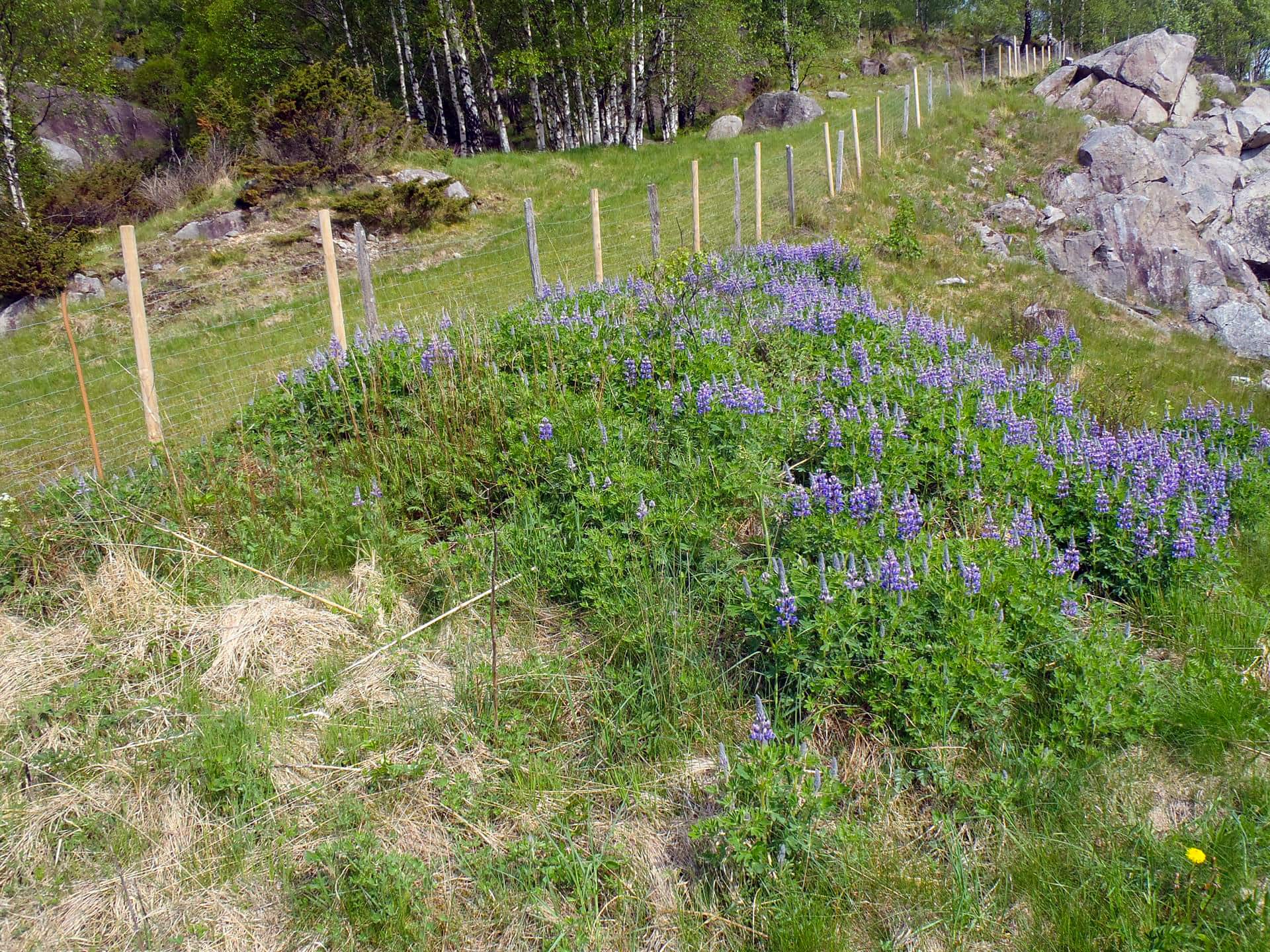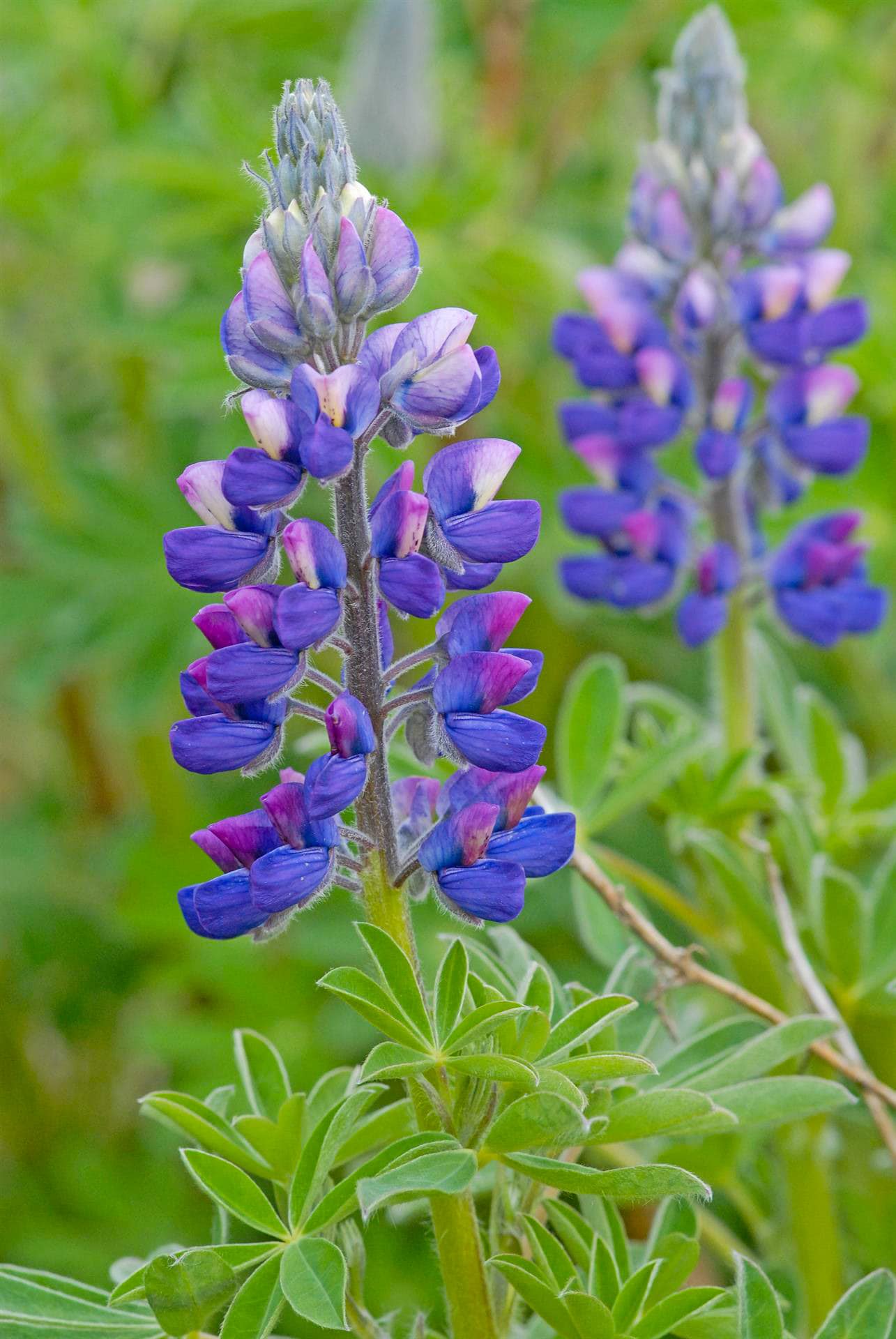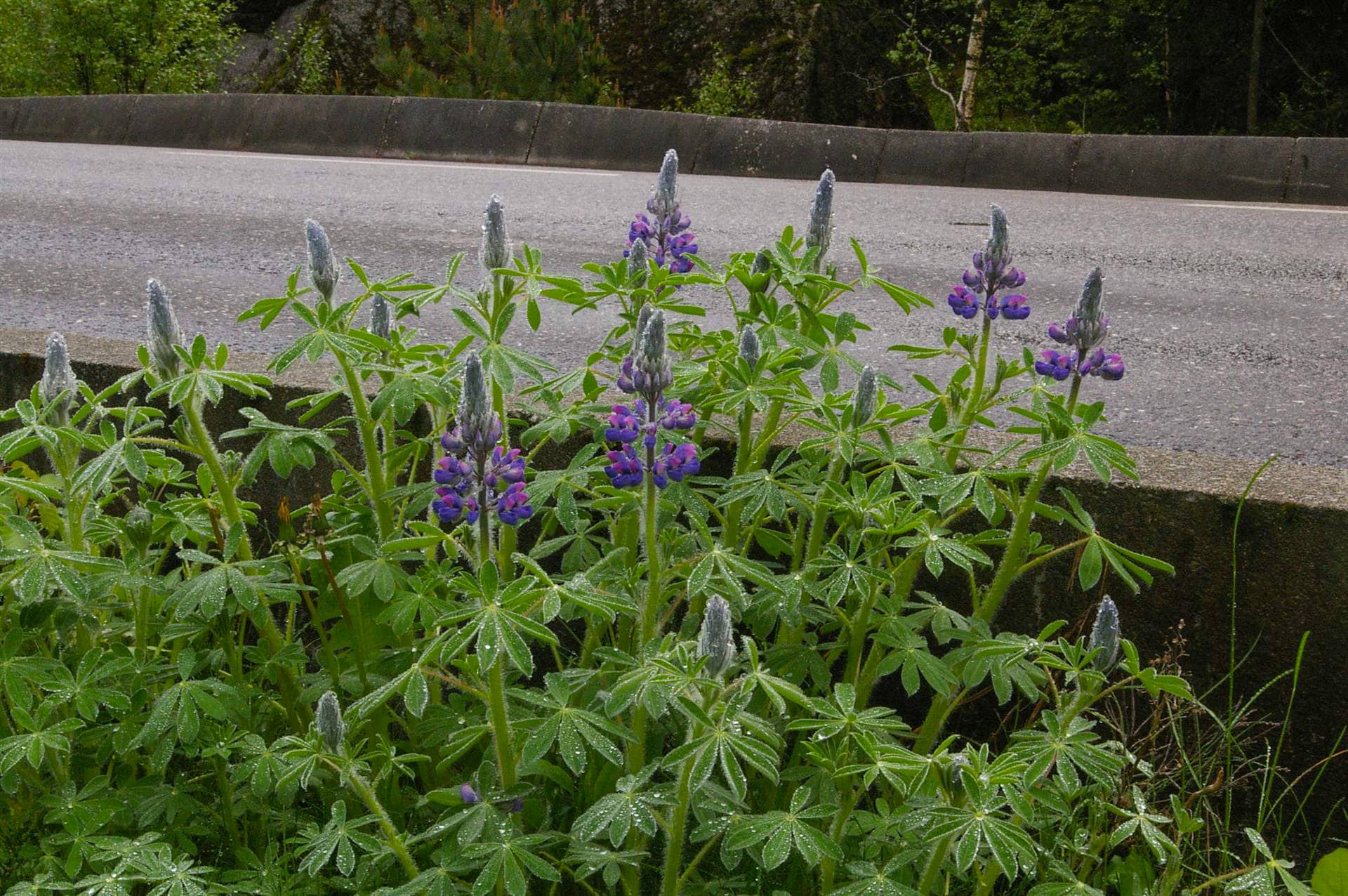What kind of plant is Nootka lupin?
Nootka lupin is established in Norway and Sweden. In Finland Nootka lupin is found occasionally, but there’s a risk that it will spread and become established also in Finland.
Nootka lupin is a perennial, leguminous plant (Fabaceae), which has symbiotic bacteria within the root nodules and thus the ability of nitrogen-fixing from atmosphere. It enables the growth on very low-nutrient land. Nootka lupin supplants, for example, already threatened meadow flora which need low-nutrient land to grow in.
Nootka lupin survives better than the garden lupin in northern climate. In Iceland it has been used in reforestation as a soil improving plant, and these days it is widely distributed and well established in the lowlands. Nootka lupin has spread aggressively also in Norway, and there’s a risk that it might spread to areas in Finland and Sweden where garden lupin can’t survive. Nootka lupin thrives on roadsides, gravel pits, and river embankments where meadow flora typically grows. It grows about 0,5 to 1,2 metres tall. Nootka lupine’s inflorescence is vertical, racemose and quite long. It blooms in June – August. Usually, the flowers are blue to violet in color, rarely white.
Remove the flowers or cut regularly!
It is good to know that Nootka lupin spreads only from seeds. In gardens and courtyards flowers should be cut off immediately after flowering before the seeds mature. If the seeds mature the seed pods release seeds explosively into the environment in end of summer. Usually, the seeds spread within three meters of the mother plant, but with the help of wind, traffic, animals, or a stream they can be distributed far away.
Also regular cutting, 2 to 4 times during the growing season in the ground level, will inevitably undermine a plant’s vitality. If only a few lupins are present, they should be dug up individually, including the roots. Remember that the taproot can grow surprisingly deep!
Control measures need to be extended for several years, because new shoots can sprout for years to come.
How to tell Nootka lupin from garden lupin?
Nootka lupine resembles a lot the common garden lupin (Lupinus polyphyllus). Nootka lupin’s stem is hairy and usually branchy, while the garden lupin’s stem is branchless. The leaves are 6 to 8 dissected and slender compared to the 9 to 15 fingered leaves of garden lupin. Also, the leaves have different sizes and the underside is hairy. Both species are however invasive species and identifying the species are not essential for doing control measures.
More about Nootka lupin
Briefly about Nootka lupin -video



